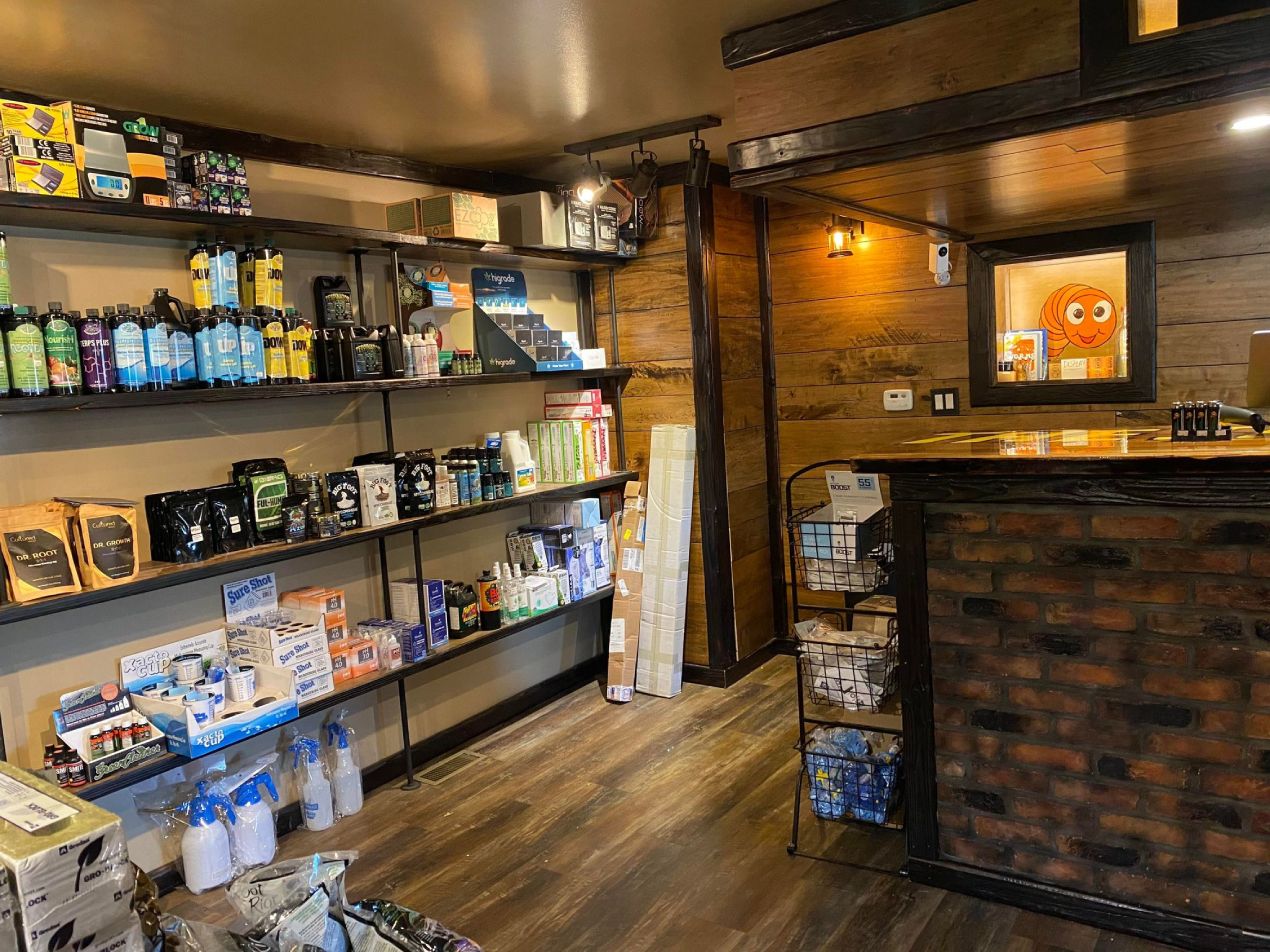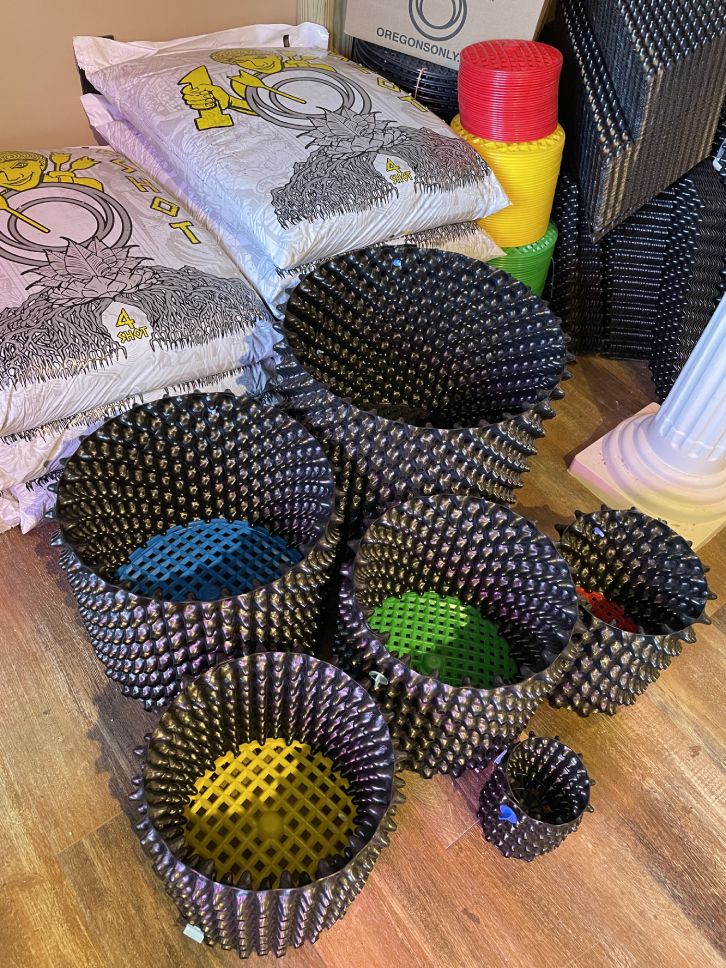Attain Gardening Success with The Indoor Earthworm's Growing Process
Attain Gardening Success with The Indoor Earthworm's Growing Process
Blog Article
Dive Into the Globe of Hydroponics: Checking Out Various Kinds
Within the realm of hydroponics exists a diverse array of farming methods that supply unique benefits for growing plants without dirt. As we start this exploration of different hydroponic systems, we will discover the complexities of techniques like the Nutrient Movie Technique (NFT), Deep Water Society (DWC), Wick System, Ups And Downs (Flood and Drainpipe), and Aeroponics. Each method provides a distinct technique to nurturing plants in a soil-less atmosphere, promising advancement and efficiency in the world of contemporary farming.

The Nutrient Film Strategy (NFT)
The Nutrient Film Strategy (NFT) is a hydroponic system that involves a continuous circulation of nutrient remedy over plant origins in a slim film to promote effective nutrient uptake. This approach makes use of a shallow stream of water that consists of liquified nutrients, allowing the plant origins to have continuous accessibility to the needed components for growth - The Indoor Earthworm. The nutrient solution moves along the base of the network, speaking to the origins and after that draining away, giving an extremely oxygenated environment essential for origin health
Among the main benefits of the NFT system is its water performance. Given that the nutrient service is recirculated, it needs less water contrasted to conventional soil-based horticulture. Furthermore, the controlled atmosphere of the NFT system reduces the threat of nutrient discrepancies and conditions, causing healthier plants. Nevertheless, this technique calls for careful surveillance of pH levels and nutrient focus to ensure optimum plant growth. Generally, the Nutrient Film Method is a preferred choice amongst hydroponic fanatics due to its simpleness, efficiency, and space-saving design.
Deep Water Society (DWC)
Among the various hydroponic systems used for growing plants, Deep Water Society (DWC) stands apart for its basic yet reliable layout. In a DWC system, plants are placed in web pots, permitting their origins to hang directly into a nutrient service. This option is oxygenated making use of air pumps and air rocks to ensure that roots receive an ample oxygen supply. The trick to success in DWC is keeping the proper oxygen levels in the nutrient solution to avoid root rot and promote healthy and balanced plant growth.
One of the key advantages of DWC is its low maintenance needs. With less relocating parts and no demand for a complex watering schedule, DWC is a beginner-friendly alternative for those brand-new to hydroponic horticulture. Furthermore, the direct access to oxygen and nutrients allows plants to uptake what they need extra successfully, often resulting in faster growth prices and greater yields compared to traditional dirt growing techniques. Managing water temperature and protecting against algae growth in the nutrient service are crucial factors to consider when executing a DWC system.
Wick System
In hydroponic cultivation, the Wick System is a passive technique that visit this website enables plants to prepare vitamins and mineral service via capillary action. This system is straightforward and ideal for newbies because of its simpleness. It contains an expanding tray full of an inert medium like perlite you can check here or vermiculite, where plants are put. A wick, usually made from products like cotton or nylon, expands from the growing tray into a storage tank filled with the nutrient option. The capillary activity of the wick allows the nutrient service to relocate from the reservoir to the growing tray, ensuring a constant supply of nutrients to the plants' roots. Among the advantages of the Wick System is its reduced price and convenience of setup. It might not be suitable for larger plants or those with high nutrient demands, as the passive nature of the system can lead to unequal vitamins and mineral circulation. Overall, the Wick System provides a reliable and straightforward means to practice hydroponic gardening.
Ebb and Flow (Flood and Drain)
Exploring the Ups And Downs (Flood and Drain) system provides insight right into a vibrant hydroponic method that alternates between flooding and draining the plant origins with nutrient remedy. This system runs by regularly flooding the plant containers with a nutrient remedy from a storage tank and after that enabling the excess service to drain back. The procedure is normally managed by a timer to guarantee regular flooding cycles, giving the origins with oxygen as the service declines.
Ebb and Flow systems are versatile and can fit various plant dimensions and types. The explanation regular flooding helps provide nutrients straight to the roots, boosting nutrient uptake efficiency.
This approach is popular amongst hydroponic enthusiasts for its versatility, simpleness, and efficiency to various plant needs. With appropriate surveillance and maintenance, the Ebb and Flow system can sustain durable plant growth in a controlled hydroponic atmosphere.
Aeroponics
Making use of a high-pressure misting system, Aeroponics is a sophisticated hydroponic method that puts on hold plant roots in an oxygen-rich environment to promote ideal nutrient absorption and strenuous development. Unlike other hydroponic techniques, which submerge origins in water or a nutrient remedy, Aeroponics supplies nutrients directly to the roots through a fine haze. This mist is sprayed at regular intervals, making sure that the origins obtain a constant supply of water, oxygen, and nutrients.

Among the essential benefits of Aeroponics is its capability to make the most of nutrient uptake while decreasing water use. By providing nutrients directly to the origins, plants can absorb them a lot more efficiently, causing faster development rates and higher yields. Furthermore, the oxygen-rich environment developed by the misting system stimulates origin development and aids protect against root diseases.
Aeroponics is particularly fit for growing leafy eco-friendlies, herbs, and other plants that grow in oxygenated atmospheres. The Indoor Earthworm. Its efficient use sources and capacity to promote fast development make it a popular choice for hydroponic lovers looking to accomplish optimum outcomes
Conclusion
In conclusion, hydroponics provides a variety of cutting-edge strategies for expanding plants without dirt. From the nutrient movie technique to deep water society, each approach has its very own benefits and obstacles. By recognizing and utilizing these various sorts of hydroponic systems, people can discover brand-new opportunities for lasting farming and make the most of plant growth in controlled environments.

Report this page